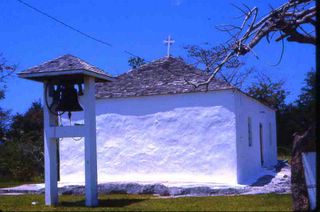
Every place has a back side. A slice of itself that stays blessedly apart from its tourist side. In Nassau, capital of the Bahamas, located on New Providence Island, the back side is the island’s south coast. The north coast holds all the tourist action, the main town with its Straw Market and British architecture from the days of Victoria and before, the glitzy hotels of Paradise Island, connected to Nassau by a short bridge, and the line-up of big beach resorts.
After a few days hedonizing at a Cable Beach hotel with a few friends, I was getting antsy. I can only do beach for so long before my vagabond soul calls out to see something real, something of the place I’m in and its people. Enough umbrella drinks. I can get those at home. I’m off.
My compatriots were content to lounge on chaises and soak up sun and alcohol, so I rented a moped to circumnavigate New Providence. Had it not been for the trail of fresh appendectomy stitch wounds bothering my mid-section, I would have biked it. A modestly fit rider can take in the whole island in a short day trip. On a moped, you need but a few hours.
I set off on West Bay Street, looking out at the crystal waters that Edward Teach, alias Blackbeard, once roamed. The pirate operated with Britain’s tacit blessing. In the 18th century Britain was waging so many sea battles that the official navy couldn’t handle them all, so seafarers of questionable repute were engaged as privateers, authorized to attack enemy ships for the Crown. The Crown was too far away to rein in the privateers’ loose interpretation of “enemy ship,” which became anything under sail suspected of holding anything of value.
I sputtered westward and rode through hilly stretches peppered with pine forests. I turned south, where, at the coast, the road became Southwest Road. I’d travel the south coast heading east on this road, which changed its name to Adelaide and Carmichael, until I’d turn north again to head back up toward Paradise Island, the city of Nassau, and back to Cable Beach.
It was Sunday. The Bahamas is a deeply religious country. Among its 325,000 citizens, about 18 different faiths are practiced. Sunday is a good day to be out in the island’s small towns and villages.
I came to Adelaide, a tiny village settled by freed slaves in 1832. In that year, a ship of the British Royal Navy intercepted a slave trader bound from Africa for the New World and liberated its human cargo. The freed blacks settled in Adelaide, home today to a few dozen families.
The wooden houses were faded but still riotously colorful, and bougainvillea shaded small lanes and yards alive with vegetable plots and chicken pens.
A bit up the road, I watched families make their way to church. Slim mothers in bright dresses held their children’s hands, and their men brought up the rear. On this brilliant Sunday morning, as tourists on the north coast rolled out of bed and greased themselves up for another beach day, Nassau’s south coast families, in their vibrant Sunday best, held hands and celebrated simple gifts.
www.lorihein.com
